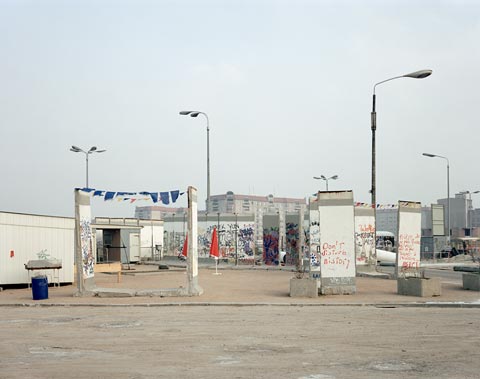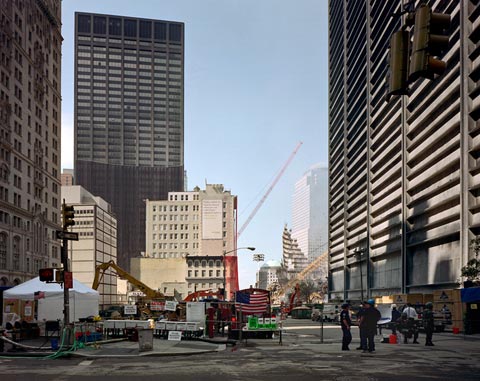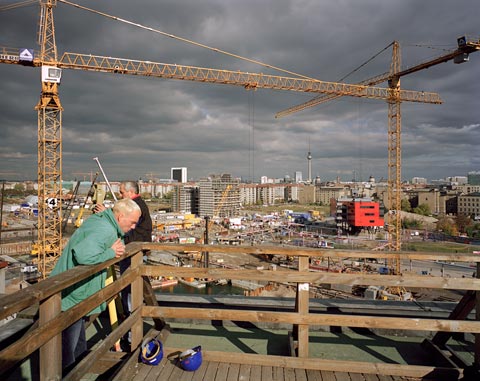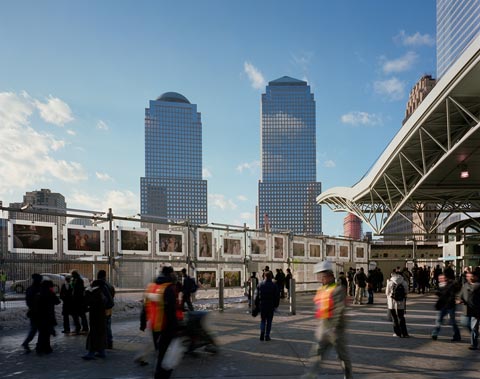New York/Ground Zero/Potsdamer Platz

Wall fragments at Potsdamer Platz, 1990 (4x5 film)
As I wrote in an earlier post, ground zero (the World Trade Center site) reminds me of Potsdamer Platz in Berlin during the great wave of construction that occurred in the 1990s after the fall of the Berlin Wall. Although the circumstances leading to the two rebuilding efforts are obviously different, both were and are of intense interest to the public.
The reclamation of Potsdamer Platz was not just about the unification of Germany. It represented a new beginning reaching back to the zero hour (Stunde Null) at the end of World War II with its landscape of destruction. This no man’s land at the center of the city lay in limbo through the Cold War years, bisected by the Wall, and symbolized the unreconciled issues concerning the destiny of Germany and Europe, the Holocaust, and the role of Berlin as the historical metropolis at the crossroads of east and west.
The destruction of the World Trade Center and the death of nearly 3,000, while uniquely horrific, pales in comparison to the losses of World War II. Nevertheless, it created a trauma in human and political terms that cannot be underestimated for New York and the rest of the world.

Ground zero seen from Broadway two weeks after the attack, 2001 (4x5 film)
In both Berlin and New York, the erasure of important symbols led to an immediate desire to rebuild. I won’t debate here the merits of the impulse to reclaim the image of the Twin Towers, or the wish of some to treat all of the WTC site as hallowed, therefore untouchable, ground. But there can be little doubt, that the public favored some combination of memorialization and the restoration of a heroic icon on the city’s skyline. With great fanfare a plan was selected, and despite all the compromises–some crippling–construction is now taking place. In fact, WTC 7 has aleady been rebuilt, an elegant glass tower, hovering over a vast chaotic tableau of yet unrealized plans.
In Berlin millions came to witness the rebuilding of Potsdamer Platz, and participate in the debate surrounding the plans of the architects who became household names in Germany and abroad. Many of the architects who were active at that time in Berlin–Libeskind, Piano, Rogers, Foster, Calatrava–are now similarly employed in New York affirming a post-9/11 recognition of the role of architecture in civic life.

Potsdamer Platz construction with red InfoBox, 1996 (4x5 film)
The public’s passion for the rebuilding of Potsdamer Platz was properly understood in Berlin, and a temporary structure was erected in the midst of the site housing the models, drawings, and videos. The InfoBox, as it was called, also featured an elevated deck for surveying the surrounding urban forest of construction cranes. The InfoBox became the destination for the droves of tourists who otherwise would have wandered aimlessly about the site looking for views while trying to make sense of what was going on.

Ground zero visitors and commuters, 2007 (4x5 film)
This, alas, is the present situation at ground zero in New York.
To be continued…

0 Comments:
Post a Comment
Links to this post:
Create a Link
<< Home